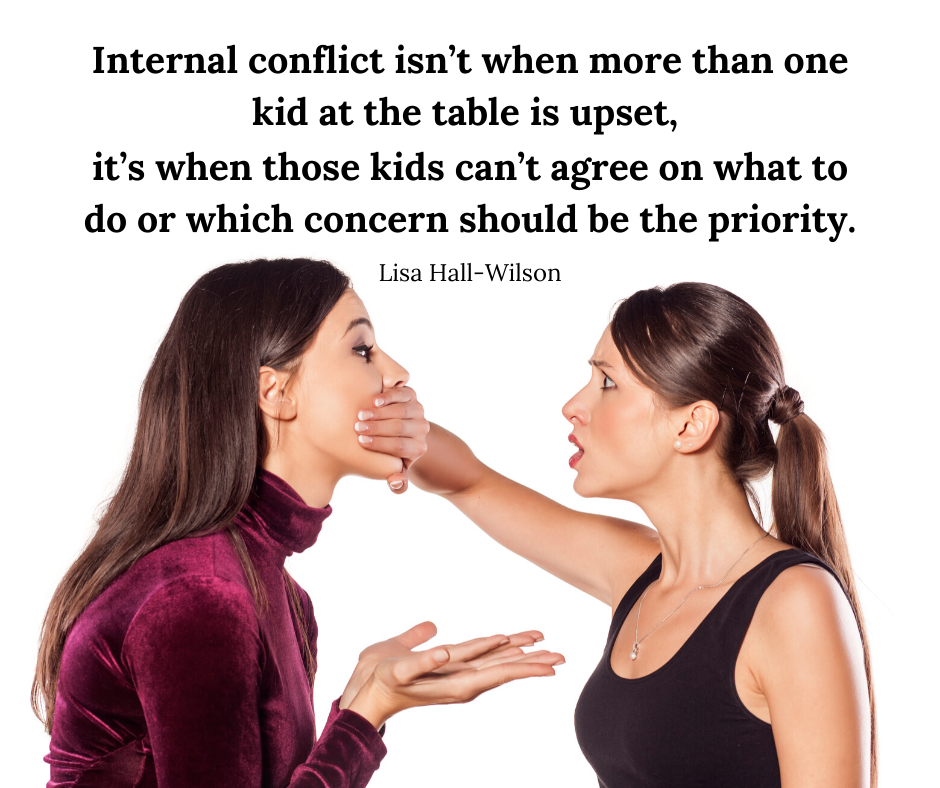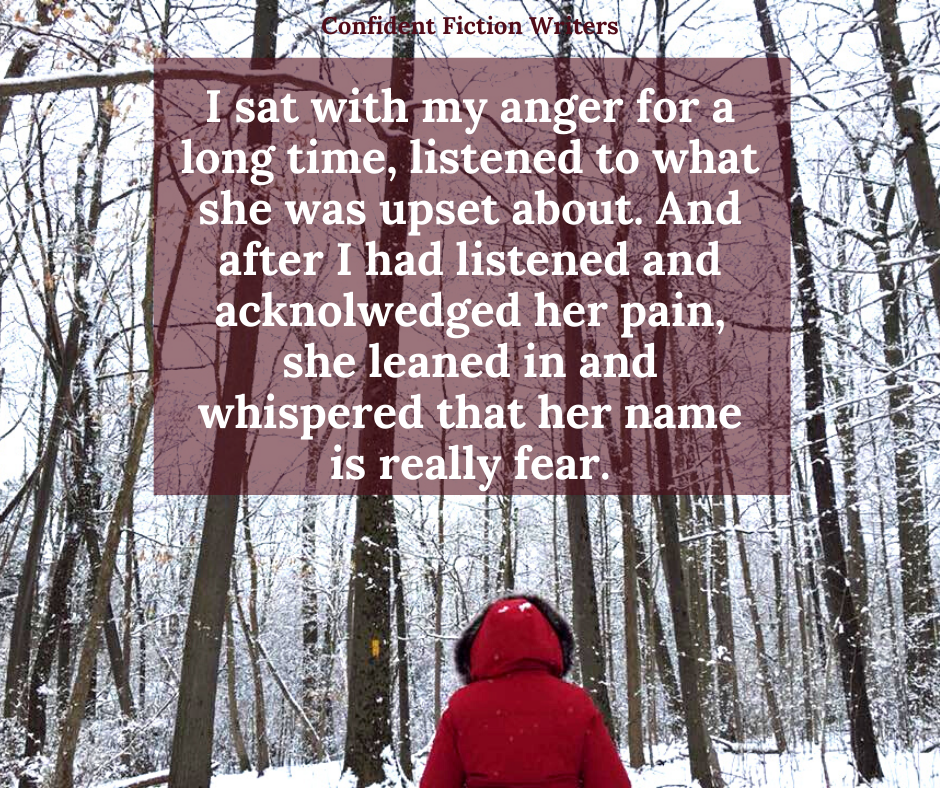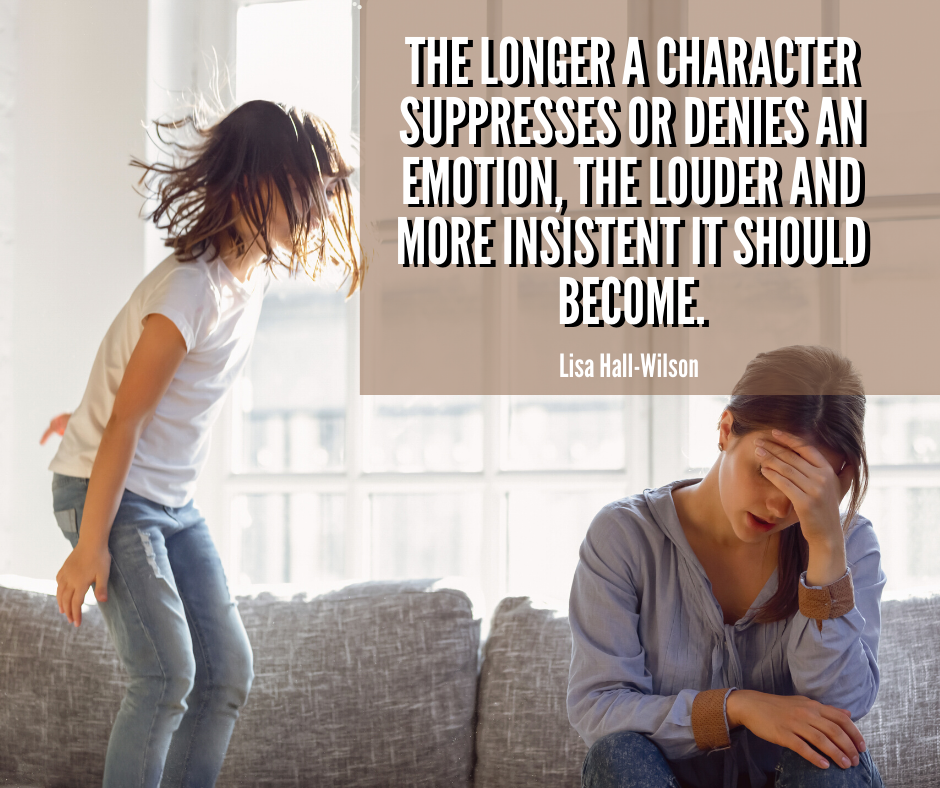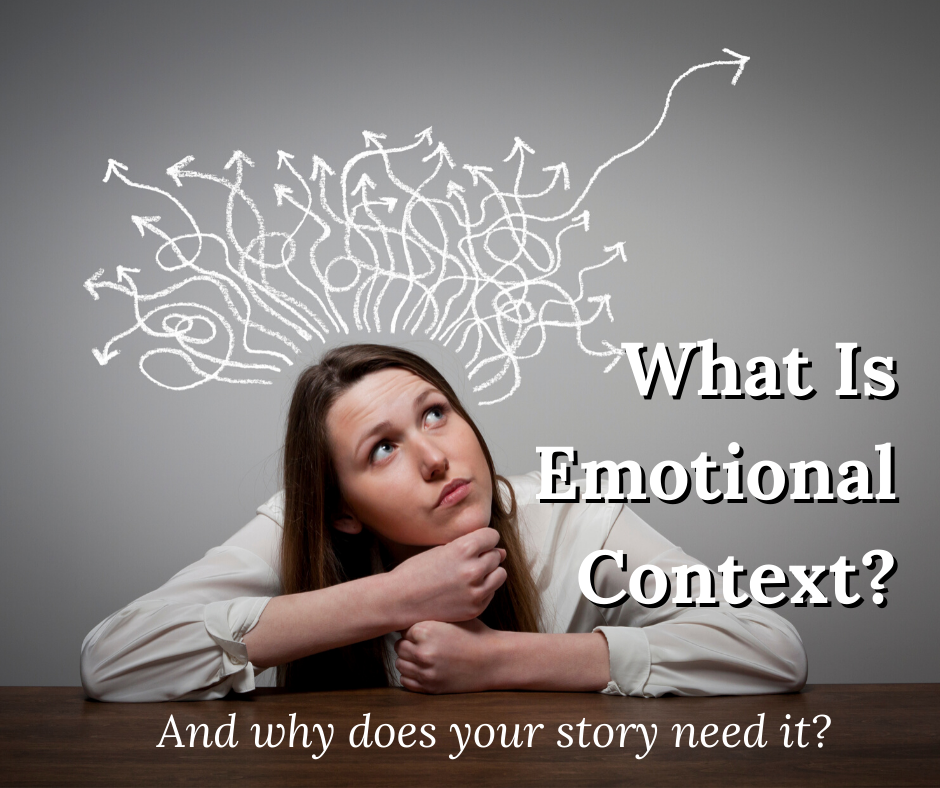
This is part two to a post I wrote last week for Writers Helping Writers on giving characters emotional context.
Your character has a reason for feeling the way they do and reacting the way they do. In deep point of view, everything is filtered through your POV character’s perspective. What does this situation mean to THAT character, RIGHT NOW, based on their own unique past experiences, prejudices, fears/concerns, priorities, and goals (emotional context)?
We know that emotions serve a specific purpose – they’re always trying to keep us safe, protect us, or inform us of a concern. In last week’s post I talked about the kids at the table. Here’s what’s important to know – not every kid at the table represents an emotion. Some of the kids at the table will be defense mechanisms. Everyone has defense mechanisms they default to, some are chosen involuntarily, some we aren’t even consciously aware of. But all of that will show the reader a lot about who the character is and what’s important to them.
Defense mechanisms (or coping mechanisms) are emotions or behaviours that step in when we are faced with something that’s uncomfortable, overwhelming, that creates cognitive dissonance, or leaves us feeling vulnerable/exposed. Some defense mechanisms are learned (often in childhood), some are involuntary, and some are unconscious.

Let’s unpack that a bit. Emotions that are uncomfortable or overwhelming, or leave us vulnerable or feeling fearful will usually force the character to DO something to resolve the discomfort. Whether they choose to avoid the problem, channel it into exercise, fantasize about what they should have said, or rationalize why doing nothing is the right path, they will DO something to feel better. They will DO something to feel as though they’ve regained control of the situation or their emotions.
Cognitive dissonance is when we simultaneously have two or more conflicting beliefs and act against one. Your character meets this really great guy, she really likes him — but he got angry once and hit her. Does she marry him? There are two opposing ideas of safety at play here. Will she choose to remain alone (which she believes makes her vulnerable), or somehow rationalize, intellectualize, or even repress the violence? How does she make these opposing beliefs somehow appear to agree with each other?
Dig Down For The Primary Emotion
Your reader won’t ever understand why your character is mad if you don’t know. You might become frustrated that your beta readers aren’t getting it, but more likely you’ll fall back into telling to get the point across. Resist!! Primary emotions are emotional reactions to things that are instinctive or knee-jerk. Secondary emotions are the thinking reactions to primary emotions. Learn more about that here. Defense mechanisms can behave like a secondary emotion, but don’t be fooled.
A Google search might bring up a variety of lists of primary emotions and if that’s helpful to you that might be a place to start. There isn’t really a template here or definitive list to go by to tell you if something is a primary or secondary emotion.

Many many emotions can be either a primary or secondary emotion. Fear could be a primary emotion: Little dog has a barking fit and the character looks up from her weeding to see a bear in the yard. The bear moves towards her little dog so she picks up her trowel and pail, stands up and starts cursing and banging and yelling and waves her arms around at the bear. What makes her decide to behave that way? Fear is the primary emotion fuelling her reaction and then anger kicks in that the bear would threaten her dog.
The anger is a secondary emotion – it’s a reaction to the fear. But if all the readers know is that she’s trying to scare off the bear (which might seem irrational), they won’t understand WHY. If the readers don’t know that the reason she’s doing it is fear, because she lost other dogs to a bear not fear for her own safety, they won’t connect with her struggle.
Afterwards, the adrenaline has worn off, her pup is safe and the bear is gone. The fear won’t go away, it’s uncomfortable, it’s unsettling, she’s trembling, feels out of control, unsafe. She returns to her gardening like it never happened. She doesn’t choose to sit with the fear, or let it dissipate, she ignores it (defense mechanism).

Suppressing the fear should have consequences. Will it make her twitchy? Will she decide she no longer wants to garden? Will she put up a fence? Will she buy a gun? What will that suppressed emotion force her to do to make it soften back, to sit quietly at the table again?
Smoking can be a defense mechanism, and if it is — you can use it to SHOW how your character is feeling or what they’re avoiding feeling. Excessive exercise is another defense mechanism that can help you show readers that the character is struggling for control or trying to sort something out. A character who actively avoids a particular person or situation does that for a reason and it can create emotional depth for readers to understand why they do that. Alcohol and sleeping a lot are both defense mechanisms that attempt to numb emotions — show the WHY behind that behaviour.
I’ve created a list of 22 different defense mechanisms to help spark your imagination or provide a label for further research as well as a chart to help you brainstorm and organize how you’re using emotions and defense mechanisms. You can download it for FREE in the Resource Hub.
What defense mechanisms are you using in your current WIP? What emotions are they avoiding or trying to feel in control of?
Been told you should learn Deep Point Of View? Had an editor or critique partner tell you to “go deeper” with the emotions in your fiction? Looking for a community of writers seeking to create emotional connections with readers? Check out the Free Resource Hub and then join the Going Deeper With Emotions In Fiction Facebook group.

Comment